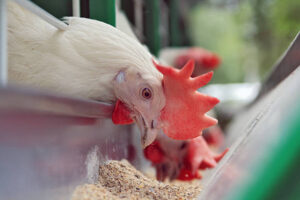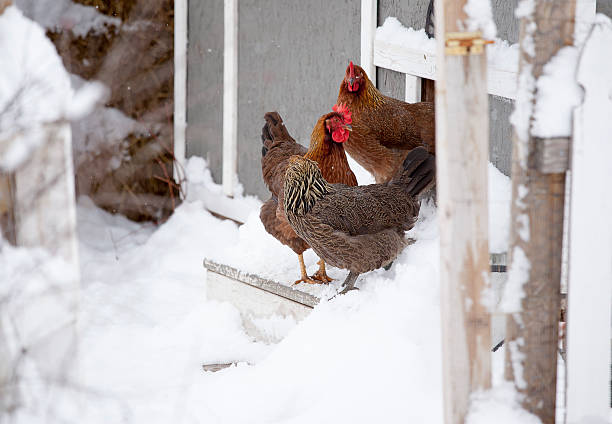It’s time to head into the snowy, cold depths of winter. Your chicken coop has frost on the top. You fear the freezing temps will chill your birds. Do they need better nutrition? Is the coop safe and sturdy? Will your chickens — and your coop — be ready for winter’s challenges? We’ll give you the tips!
Chicken Coop Heat
To heat or not heat: that is the question. Heated coops are truly a subject of contention amongst chicken owners. The risk may be higher than the reward. It’s really a personal choice for many reasons, because:
- Heat lamps may burn down a coop, they must be used with precaution.
- Chickens used to an artificial heat source likely won’t acclimate to colder temperatures.
- Chickens will probably experience distress and may die if there is a power outage.
The bottom line is that most cold-hearty breeds like Australorps, Rhode Island Reds, and Barred Rocks can likely tolerate the winter without an extra heat source. However, their run and coop must be draft-free, so they can use their own feathers and pile together with flock mates to generate enough heat.
Colder weather irritates sick birds. Chicks need heat before they are full-feathered. Particular breeds like Silkies, which are considered cold hardy, actually can’t hack wet weather well when winter hits. According to MyPetChicken.com, “If you have special needs birds or your area regularly sees temps below freezing, you may indeed need to give your flock a little heat boost to help them through the winter… [newer alternatives to heat lamps] won’t heat the whole coop; they’ll only provide a little extra heat on contact, when birds snuggle right up next to them. This allows your birds to still acclimate to the colder weather, while providing potentially life-saving warmth during especially cold snaps.”
Chicken Coop Air Flow
Drafts ruffle feathers, chilling chickens and making them sick. Some chicken keepers put plastic around the coop and/or run to keep in a little heat and stop those pesky drafts. But are you leaving enough air flow? Too much air can chill birds, but too little can suffocate them.
- Place thicker (4 or 6-ml) plastic around outer areas at least at roosting height and below. This will leave enough room for air to come and go around the ceiling area.
- Cover windows to prevent drafts with a curtain, especially if it’s at roost height or near nesting boxes.
- Go stand in the coop or run to see how drafty it is on a windy night. Then, find the drafts and eliminate them — but leave those upper vents open.
Caring for Chickens: Nutrition
Mature hens molt before winter. If you want to speed up the molting process, you can use Nutrena Feather Fixer which has higher protein. When their feathers are back, they’ll be warmer. A bit of warm mash soon after they leave the roost in the morning will also help them adjust to extreme temps.

Coop Care
Is your coop a fortress? A hole in the coop, run, or a surrounding fence can allow more wind to get into the area causing life-threatening chills (and creating opportunities for predators). Repair all holes in any of the chicken wire or hardware cloth so your chickens don’t get stuck or cut themselves on sharp wire. Check over the run, coop, and/or fences and repair any issues.
Are your birds in a draft-free space now, prepared to plunge into this windy, wintry season? If you follow the steps above, your birds will be ready to fly into winter! NJ Chicken Feed & Livestock Feed has just what you need to get your feathered friends safely and comfortably through winter.

